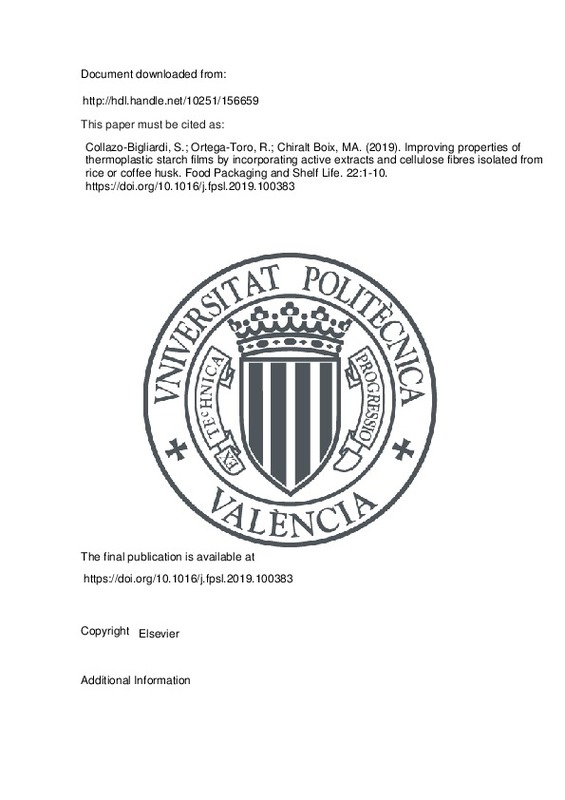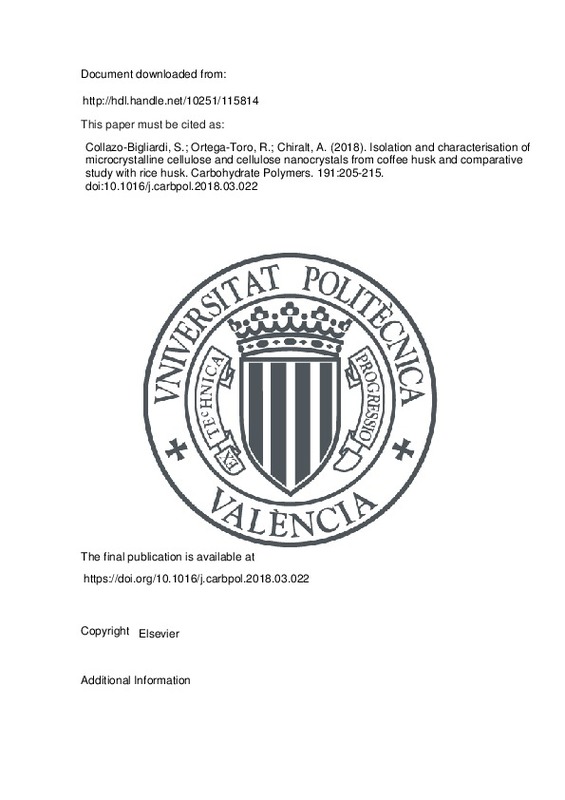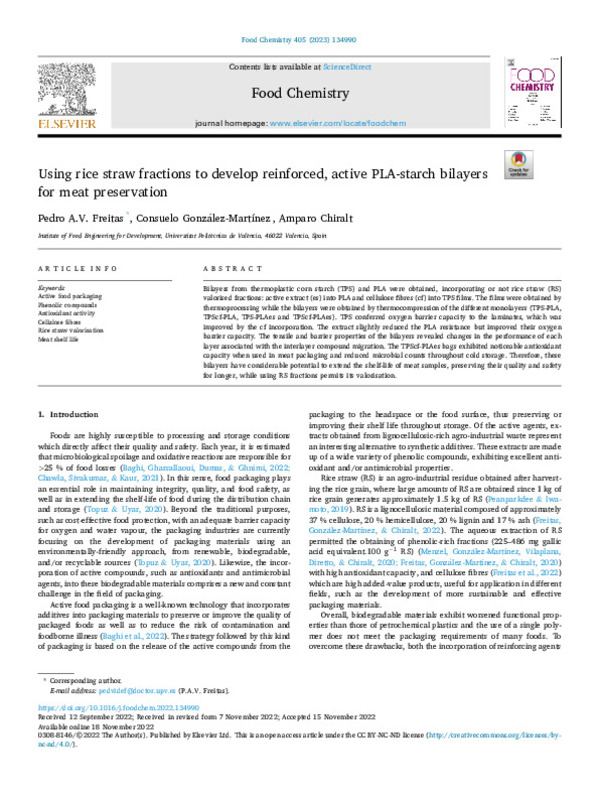

Listar por palabra clave "Cellulose fibres"
RiuNet: Repositorio Institucional de la Universidad Politécnica de Valencia
- RiuNet repositorio UPV
- :
- Listar por palabra clave
JavaScript is disabled for your browser. Some features of this site may not work without it.
Buscar en RiuNet
Listar
Mi cuenta
Ayuda RiuNet
Admin. UPV
Listar por palabra clave "Cellulose fibres"
Mostrando ítems 1-7 de 7
-
Collazo-Bigliardi, Sofía; Ortega-Toro, Rodrigo; Chiralt Boix, Mª Amparo (Elsevier, 2019-12)[EN] Hydrothermal (60 min, 180 degrees C) extracts and cellulose fibres from coffee and rice husks were obtained to be incorporated into corn starch films, in order to improve the film functional properties as food packaging ...
-
Collazo-Bigliardi, Sofía; Ortega-Toro, Rodrigo; Chiralt, A. (Elsevier, 2018)[EN] Cellulosic material from coffee husk has not been previously studied despite being a potential source of reinforcing agents for different applications. This material has been extracted and characterised from coffee ...
-
Granado Santana, Laura (Universitat Politècnica de València, 2023-09-04)[ES] La paja de arroz es un residuo agroalimentario producido a gran escala a nivel mundial (756 millones de toneladas en 2020). Su composición lignocelulósica le convierte en una fuente importante de celulosa que puede ...
-
Collazo-Bigliardi, Sofía; Ortega-Toro, Rodrigo; Chiralt, A. (Scrivener Publishing, 2018)[EN] Cellulosic fibres from coffee (CF) and rice (RF) husks have been obtained applying chemical treatments and characterized as to their microstructure and thermal behaviour. These materials have been incorporated into ...
-
Vieira-De Freitas, Pedro Augusto; González Martínez, María Consuelo; Chiralt, Amparo (MDPI AG, 2024-06)[EN] The stability and composting behaviour of monolayers and laminates of poly (lactic acid) (PLA) and starch with and without active extracts and cellulose fibres from rice straw (RS) were evaluated. The retrogradation ...
-
Vieira-De Freitas, Pedro Augusto; Martín-Pérez, Laia; Gil-Guillén, Irene; González Martínez, María Consuelo; Chiralt, Amparo (MDPI AG, 2023-10)[EN] Almond skin (AS) is an agro-industrial residue from almond processing that has a high potential for valorisation. In this study, subcritical water extraction (SWE) was applied at two temperatures (160 and 180 degrees ...
-
Using rice straw fractions to develop reinforced, active PLA-starch bilayers for meat preservation Vieira-De Freitas, Pedro Augusto; González Martínez, María Consuelo; Chiralt, A. (Elsevier, 2023-03-30)[EN] Bilayers from thermoplastic corn starch (TPS) and PLA were obtained, incorporating or not rice straw (RS) valorised fractions: active extract (es) into PLA and cellulose fibres (cf) into TPS films. The films were ...
Mostrando ítems 1-7 de 7

Universitat Politècnica de València. Unidad de Documentación Científica de la Biblioteca (+34) 96 387 70 85 · RiuNet@bib.upv.es








